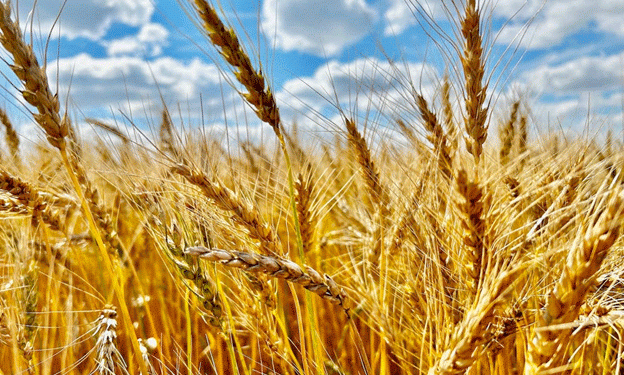Canada’s 2024 wheat crop is another testament to the country’s standing as a leading global wheat exporter, particularly for high-quality, high-protein varieties. According to the 2024 Crop Summary report by Cereals Canada, Canadian farmers harvested 34.3 million tonnes of wheat this year, with 25.4 million tonnes expected to be exported. This marks Canada as the world’s third-largest exporter of wheat, maintaining its position as the top exporter of high-quality wheat for the second consecutive year.
Western Red Spring (CWRS) wheat continues to dominate Canadian production, accounting for 63% of the total wheat output. The quality of this year’s CWRS crop was exceptional, with 68.5% of the 2,150 samples submitted through November 1st grading No. 1 and 25.4% grading No. 2. The average protein content for CWRS wheat across the Prairie region was 14.1%, slightly above the 10-year average of 13.8%. This increase is attributed to favorable growing conditions and improved crop management practices. AAC Brandon, the most widely grown variety this year, accounted for 25% of total CWRS acreage, down from over 40% four years ago. Newer varieties like AAC Wheatland and AAC Starbuck are gaining traction, contributing to a diversified and resilient wheat portfolio.
In contrast, Canada Western Amber Durum (CWAD) faced challenges this year. With drought impacting many regions, 45.2% of the 839 CWAD samples graded No. 1, and 27.3% graded No. 2. The quality of CWAD was affected by poor test weights and shrunken kernels. Despite these setbacks, CWAD still showed a Prairie average protein content of 15.3%, one percentage point higher than the 10-year average. This crop’s semolina demonstrated good cooking quality, texture, and bright yellow color, essential for making high-quality pasta products.
Prairie Spring Red (CPSR) wheat contributed 1.9 million tonnes, or 6% of total wheat production in Canada. The protein content for CPSR is comparable to its five-year average, and this year’s crop showcased good milling performance, water absorption, and gluten strength. The test weight for CPSR was also robust, making it suitable for a range of end uses, including livestock feed and industrial products.
The exceptional quality of Canada’s wheat crop in 2024 is driven by a combination of favorable weather, improved seed varieties, and better management practices. As the world continues to seek reliable, high-quality wheat sources, Canada’s commitment to advancing wheat production technologies and breeding new varieties will be crucial in maintaining its position as a leading exporter.
Canada’s 2024 wheat crop exemplifies the country’s leadership in global wheat exports, particularly for high-quality, high-protein varieties. Despite challenges, including drought and varied soil conditions, Canadian farmers have produced a crop that meets stringent quality standards. With continued research and innovation in wheat breeding and management, Canada is well-positioned to meet global demand for quality wheat, contributing significantly to global food security.
Error





